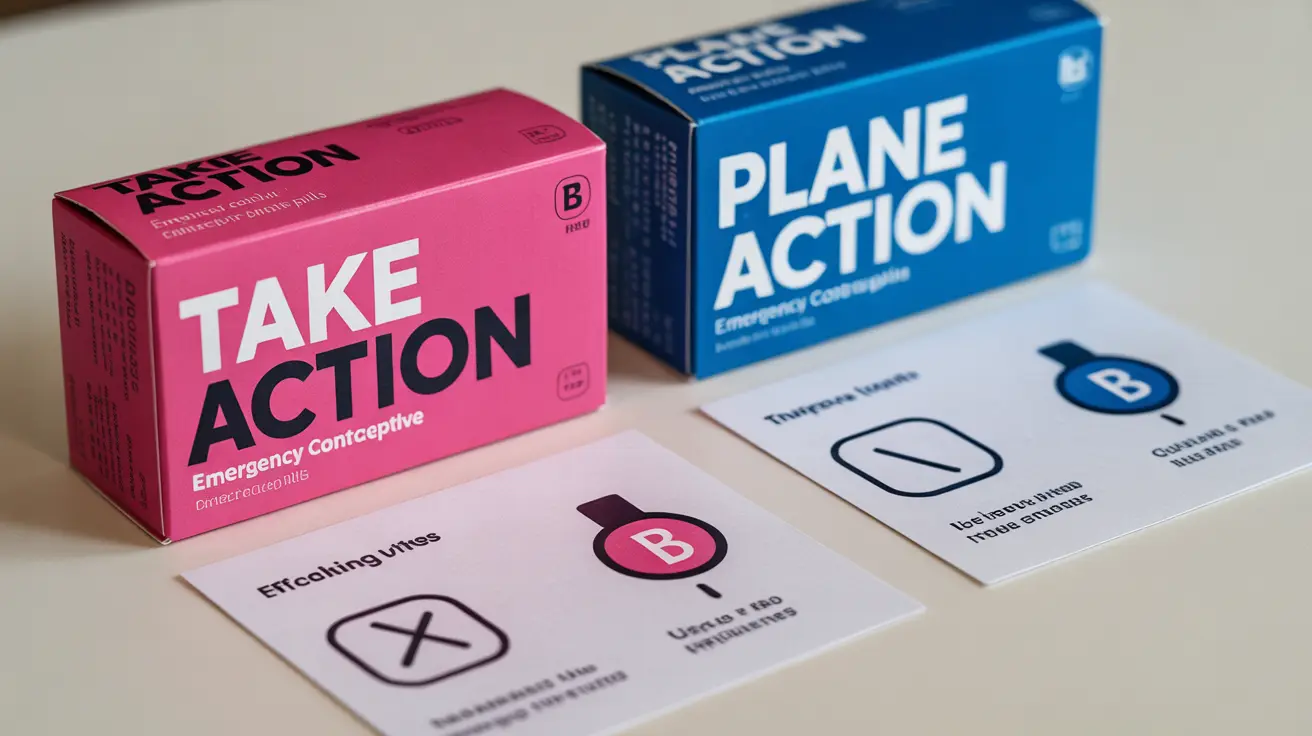When you need emergency contraception after unprotected sex or contraceptive failure, knowing the differences between Take Action and Plan B can help you make an informed decision. Both medications are emergency contraceptive pills designed to prevent pregnancy, but they have distinct characteristics in terms of cost, availability, and usage considerations.
This comprehensive guide will help you understand the key differences between Take Action and Plan B, their effectiveness, where to find them, potential side effects, and important factors that could affect how well they work.
Understanding Take Action and Plan B
Take Action and Plan B are both emergency contraceptive pills that contain the active ingredient levonorgestrel, a synthetic form of the hormone progesterone. They work primarily by preventing or delaying ovulation, making it less likely for pregnancy to occur after unprotected intercourse.
Key Similarities
Both medications contain the same active ingredient at the same dosage (1.5mg levonorgestrel) and work in identical ways to prevent pregnancy. They are both most effective when taken as soon as possible after unprotected sex, ideally within 72 hours.
Notable Differences
- Pricing (Take Action is typically less expensive)
- Packaging and branding
- Availability at different retailers
- Insurance coverage options
Effectiveness and Timing
Both Take Action and Plan B are most effective when taken as soon as possible after unprotected sex. The effectiveness rates are:
- Within 24 hours: approximately 95% effective
- Within 72 hours: approximately 89% effective
- Between 72-120 hours: reduced effectiveness
- After 120 hours: not recommended
Availability and Cost Comparison
Take Action is generally marketed as a more affordable alternative to Plan B, often costing $10-15 less. Both are available:
- Over-the-counter without a prescription
- At most major pharmacies and drugstores
- Through online retailers
- At health clinics
Common Side Effects
Users of either medication may experience similar side effects, including:
- Changes in menstrual bleeding
- Nausea
- Breast tenderness
- Headaches
- Fatigue
- Lower abdominal pain
Important Considerations
Several factors can affect the effectiveness of both medications:
- Body weight (may be less effective for individuals weighing over 165 pounds)
- Certain medications, including some anti-seizure drugs
- Timing of use within your menstrual cycle
- How quickly the medication is taken after unprotected sex
Frequently Asked Questions
What is the difference between Take Action and Plan B emergency contraceptive pills?
Take Action and Plan B contain the same active ingredient (1.5mg levonorgestrel) and work identically. The main differences are in pricing (Take Action is usually cheaper) and branding. Both are equally effective when used as directed.
How effective are Take Action and Plan B when taken after unprotected sex?
Both medications are most effective (up to 95%) when taken within 24 hours of unprotected sex. Effectiveness decreases to about 89% when taken within 72 hours, and continues to decline after that.
Where can I buy Take Action compared to Plan B, and which one is cheaper?
Both are available over-the-counter at most pharmacies, drugstores, and health clinics. Take Action typically costs $10-15 less than Plan B, making it a more affordable option while providing the same effectiveness.
What side effects should I expect from taking Take Action or Plan B?
Common side effects for both medications include changes in menstrual bleeding, nausea, breast tenderness, headaches, fatigue, and lower abdominal pain. These effects usually resolve within a few days.
Can taking certain medications or body weight affect how well Take Action or Plan B work?
Yes, both medications may be less effective for individuals weighing over 165 pounds. Certain medications, particularly some anti-seizure drugs, can also reduce their effectiveness. It's important to consult with a healthcare provider if you have concerns about these factors.




